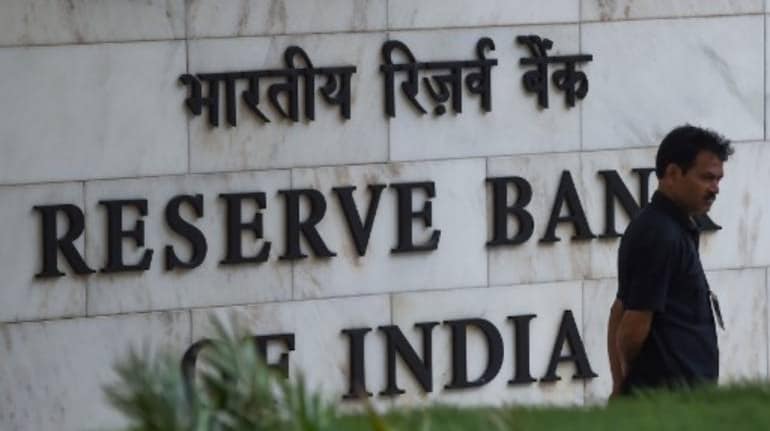



The prediction of normal monsoon season by the Indian Metrological Department (IMD) will be a supporting factor for the Reserve Bank of India (RBI) in its inflation battle, experts said.
However, they pointed out that the unevenness in rain distribution could have an impact on the projections going ahead.
The RBI has projected retail inflation to moderate to 5.2 percent in fiscal year 2024. Inflation stayed above 6 percent in January and February and may fall below 6 percent in March aided by a favourable base effect.
“Normal monsoon prediction by the IMD does bring in some good news for the inflation trajectory. However, the spatial and temporal distribution of rainfall during the season will be more important,” said Sakshi Gupta, Principal Economist, HDFC Bank.
The IMD on April 11 said that the country can expect regular rainfall during the southwest monsoon season as a positive Indian Ocean Dipole (IOD) and lower snow cover over the northern hemisphere are likely to counter the developing El Nino conditions.
However, Skymet, a weather forecasting company, anticipated 'below normal' monsoon in India with 94 percent of the long-period average (LPA) rainfall of 868.6mm for four months from June to September 2023.
The Monetary Policy Committee (MPC) of the RBI expects Consumer Price Index (CPI) inflation averaging to 5.2 percent in 2023-24, 10 basis points lower than the 5.3 percent projected earlier in February.
“The IMD and Skymet forecasts are somewhat different. By the time the MPC meets at its next scheduled meeting in June 2023, the monsoon rains would be underway, giving a little more clarity into the likely outcome for the first half of the monsoon season,” said Aditi Nayar, Chief Economist, Head - Research & Outreach, ICRA Ltd.
Also read: March CPI inflation seen at 15-month low of 5.7% due to favourable base
Prediction of IMD and Skymet
M Ravichandran, Secretary, Ministry of Earth Sciences during a press conference said that India to see normal rainfall during the southwest monsoon season (from June to September). It is likely to be 96 percent (with an error margin of 5 percent) of the long-period average of roughly 87 cm.
On the other hand, Skymet predicted 94 percent of the long-period average (LPA) rainfall of 868.6mm for four months from June to September 2023.
IMD said if there is any adverse impact due to the evolving El Nino conditions during the monsoon season, it is likely to be countered by the favourable impact of a positive IOD and the lower snow cover over the northern hemisphere.
However, Skymet said El Niño and IOD are likely to be 'out of phase' and may lead to extreme variability in the monthly rainfall distribution. The second half of the season is expected to be more aberrated.
Also read: El Nino impact in second half of monsoon, Kharif crop pattern to be unaffected: Govt
RBI’s inflation projection
In the April monetary policy, the central bank changed its inflation forecast very little despite a big drop in the price of crude oil the central bank assumed in its projection models.
RBI Governor Shaktikanta Das in the April monetary policy said the rising uncertainty in international financial markets and imported inflation pressures need to be monitored closely. Taking into account these factors and assuming an annual average crude oil price (Indian basket) of US$85 per barrel and a normal monsoon, CPI inflation is projected to moderate to 5.2 percent for 2023-24.
Earlier, the assumption of an annual average crude oil price was $95 per barrel.
Despite this, economists believe that there could be some upside risk to these projections considering the unusual rains in some parts of the country and its impact on the crops and on food inflation.
CareEdge in its report said CPI inflation in March is expected to trend lower supported by the base effect and easing WPI inflation. The impact of past rate hikes and demand normalisation will also help bring core inflation down below 6 percent.
The average consumer inflation has overshot the RBI’s upper band in the last four quarters. The Q4 FY23 number is expected to be 50 bps higher than the RBI’s estimate of 5.7 percent due to a spike in food inflation in January and February, the report added.
According to a Moneycontrol survey of 16 economists, Consumer Price Index (CPI) inflation likely fell sharply to 5.7 percent last month from 6.44 percent in February due to a favourable base effect.
The Ministry of Statistics and Programme Implementation will release retail inflation data for March on April 12.
Discover the latest Business News, Sensex, and Nifty updates. Obtain Personal Finance insights, tax queries, and expert opinions on Moneycontrol or download the Moneycontrol App to stay updated!
Find the best of Al News in one place, specially curated for you every weekend.
Stay on top of the latest tech trends and biggest startup news.